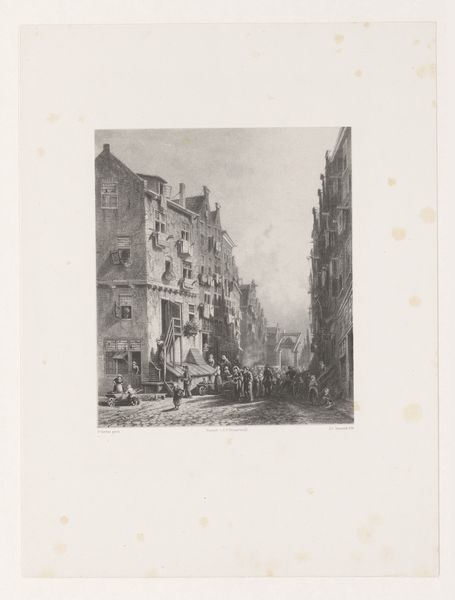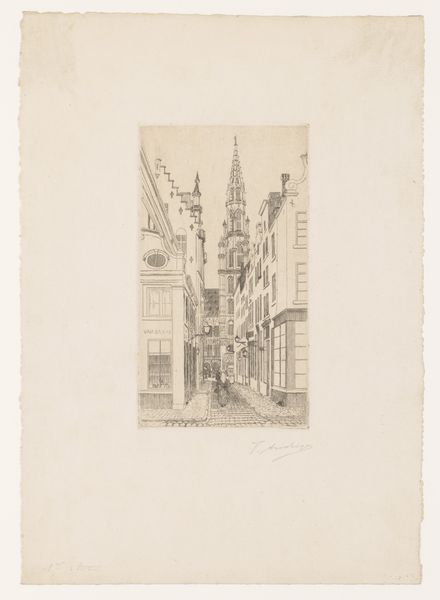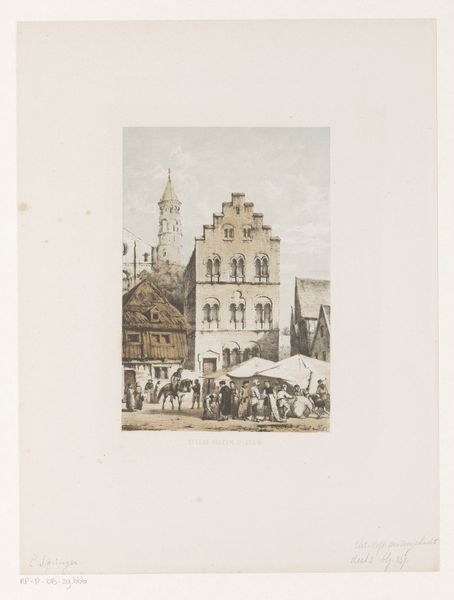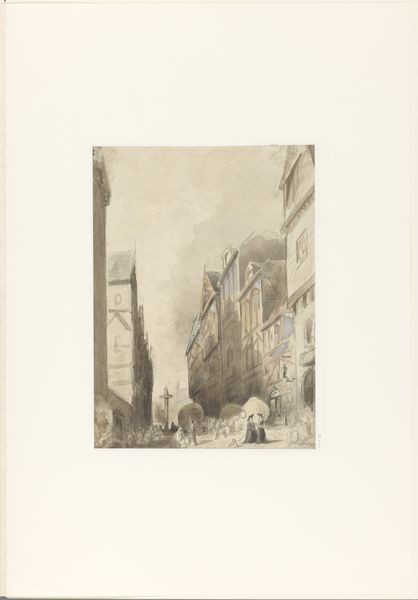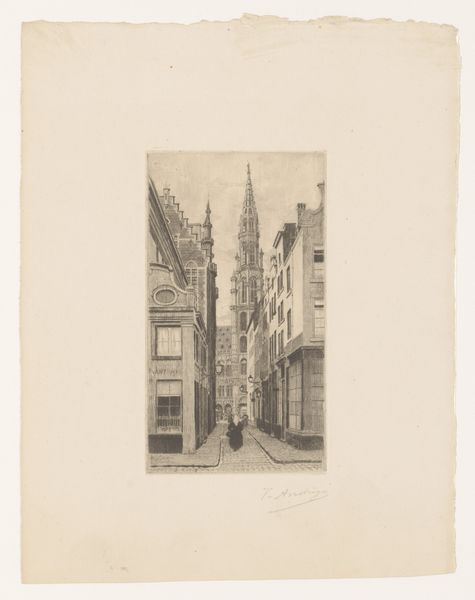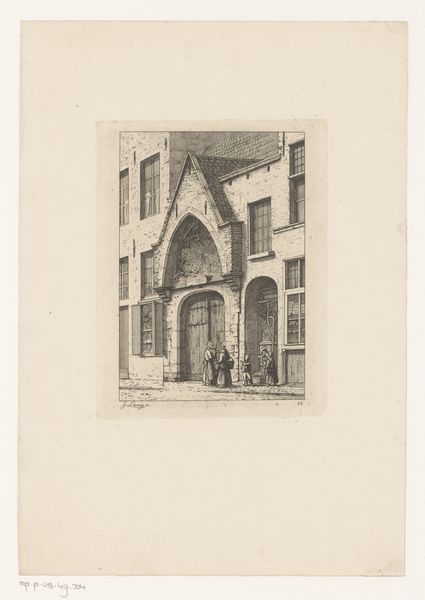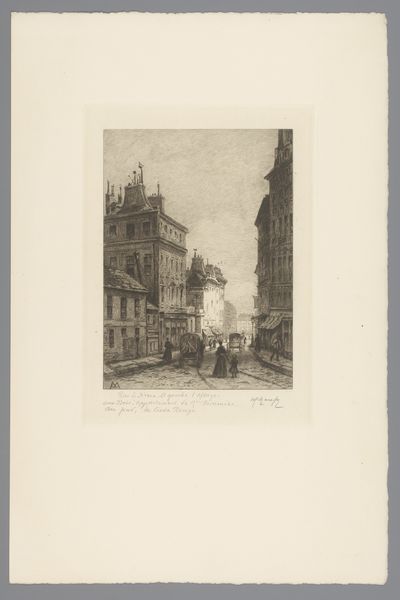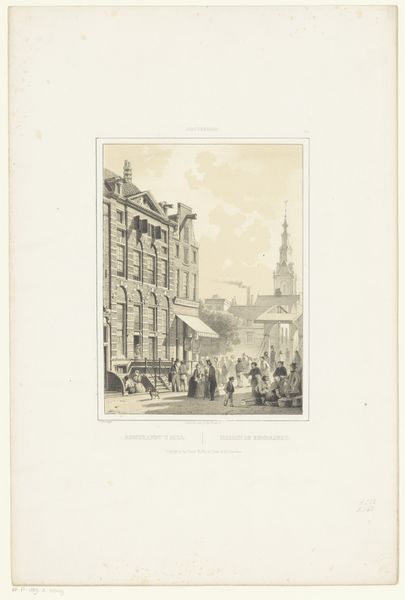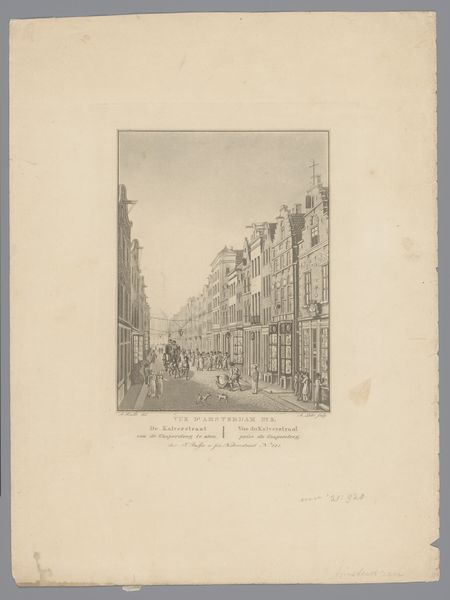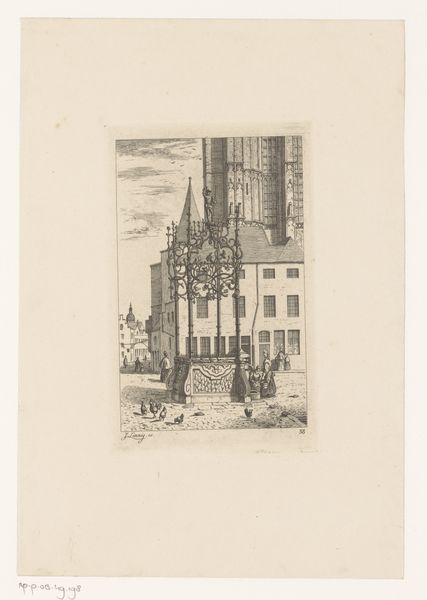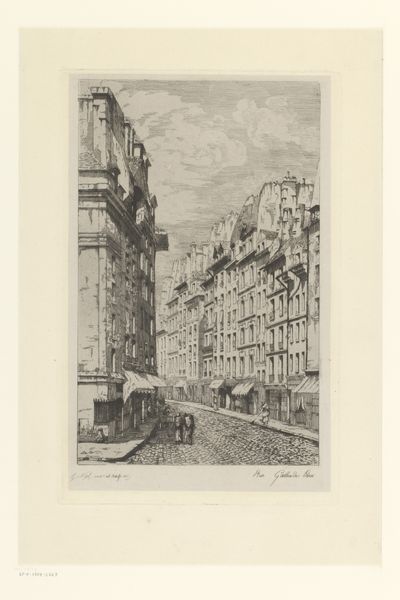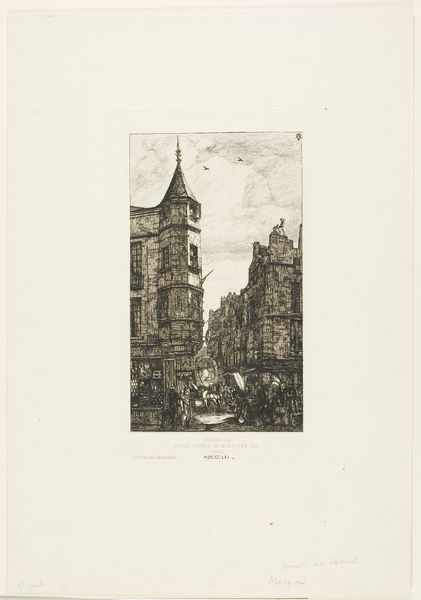
print, etching
# print
#
etching
#
cityscape
#
genre-painting
#
street
#
realism
Dimensions: height 166 mm, width 112 mm
Copyright: Rijks Museum: Open Domain
Curator: The hustle and bustle! It feels very much alive for an etching made in 1868. Editor: Yes, this print titled "Gezicht op de Korte Koepoortstraat in Antwerpen," by Jean Théodore Joseph Linnig, captures a seemingly ordinary street scene but hints at something much larger. Curator: There's an immediate sense of everyday ritual here, isn’t there? People drawing water, engaging in conversation. That central fountain figure—does it represent a local saint, perhaps? Fountains, across many cultures, are such loaded symbols—renewal, purification, the life-giving force. Editor: The location, the Korte Koepoortstraat, was in a working-class district of Antwerp. Linnig has meticulously rendered details like the timber-framed houses and the diverse population gathered around the public well. It’s an exercise in Realism, striving to portray society as it is, not how we wish it to be. It shows those from various class backgrounds interacting in the same location, which can suggest something about community and the conditions imposed by inequity. Curator: Absolutely. Look at the clothes and gestures—each one tells a story. I wonder what they are talking about. I would guess news from the surrounding towns. This image isn’t just about aesthetic representation. This everyday scene carries symbolic weight, doesn't it? It's not only an image of its own time but has become, over time, an artifact holding the memory of shared experiences. Editor: That's precisely why the seeming simplicity is so deceptive. Realism as a movement wasn't simply about mirroring reality; it was about confronting it. How public spaces function, who has access, and how community is forged under pressure—these themes remain acutely relevant. Looking at it through this lens prompts a deeper interrogation of whose stories are prioritized, or absent, in our own time. What visual signifiers of the time show those realities and what does it show of class or other realities that the people faced at that time? Curator: Food for thought, definitely. Linnig's etching technique, with those delicate lines, gives a beautiful softness despite the grit of the subject. So interesting how technique contributes to the themes presented. Editor: This exploration highlights how even a seemingly straightforward depiction of the past can serve as a powerful lens through which to examine the complexities of the present. Curator: Exactly, an evocative snapshot frozen in time but echoing into our current concerns. Editor: Indeed.
Comments
No comments
Be the first to comment and join the conversation on the ultimate creative platform.
